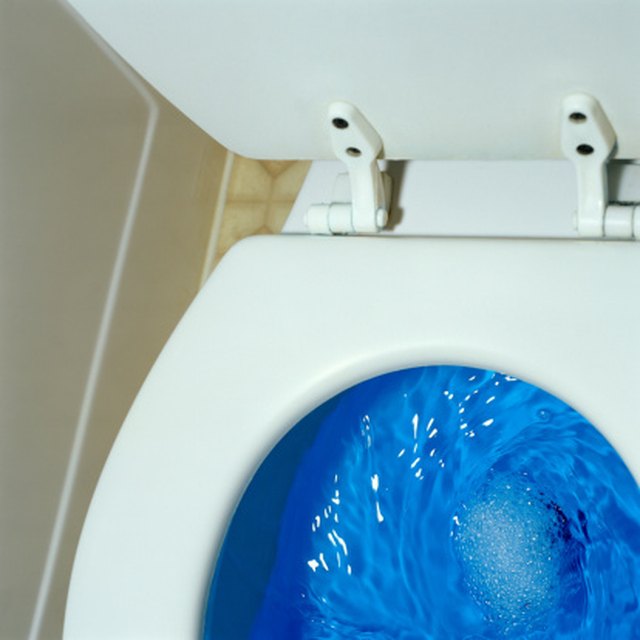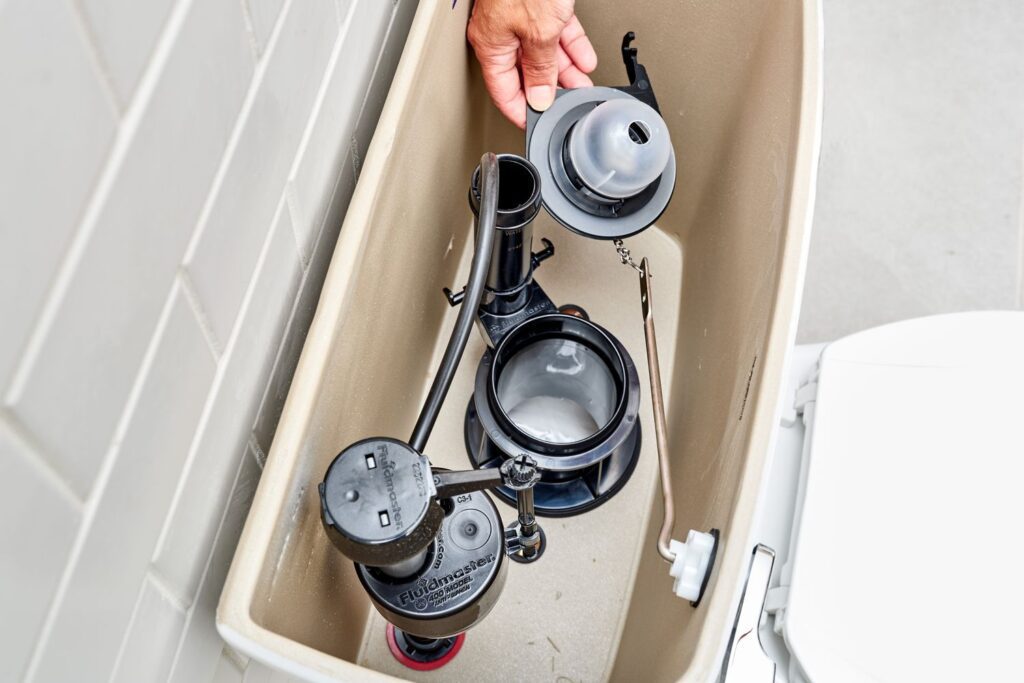Introduction

Hey there! If you’ve ever been in a situation where your toilet won’t flush and the water rises, you know how alarming it can be. This guide is your go-to resource for understanding the issue and finding a solution. We’ll delve deep into the reasons behind this common problem and provide you with actionable steps to get your toilet back in tip-top shape.
A brief overview of the common issue of toilet water rising when flushed.
It’s a scenario many of us dread: You flush the toilet, and instead of the water going down, it starts to rise. Panic sets in as you envision an overflowing toilet and a messy bathroom. But don’t worry! This is a common issue, often caused by a clog in the toilet, faulty components, or issues with the vent pipe.
The Importance of addressing the issue promptly to prevent further complications.
Ignoring the rising water level in your toilet can lead to bigger problems down the line. An overflowing toilet can cause water damage to your floors and walls, not to mention the potential health hazards. Addressing the issue promptly ensures that the water in the tank is sealing properly, and other components like the toilet flapper and fill valve are functioning as they should.
Common Causes of Toilet Water Rising

When your toilet won’t flush and the water rises, it’s not just a minor inconvenience. It’s a sign that something’s amiss in your plumbing system. Let’s dive deeper into the common culprits behind this issue.
Partial Clog in the Toilet
Ah, the notorious partial clog. It’s one of the primary reasons your toilet water rises too high when flushed. But what causes these clogs?
Description of how items like Q-tips, hygiene products, baby wipes, toys, and hair can cause partial clogs.
- Q-tips and Hygiene Products: These tiny items might seem harmless, but they can quickly accumulate and create a clog in the toilet. Unlike toilet paper, they don’t disintegrate easily in water.
- Baby Wipes: Even the “flushable” ones can be a menace. They don’t break down as quickly as toilet paper, leading to potential blockages.
- Toys: If you have little ones around, always keep an eye out. Kids are curious, and sometimes toys end up in the toilet bowl.
- Hair: Loose strands can intertwine with other debris, forming a tough blockage that’s hard to flush away.
Malfunctioning Toilet Flapper

The toilet flapper plays a pivotal role in your toilet’s operation. When it malfunctions, it can cause a myriad of issues.
Explanation of the role of the flapper and how a damaged or old flapper can cause water to rise.
The flapper is a rubber component in the toilet tank that acts as a seal for the water in the tank. When you flush the toilet, the flapper lifts, allowing water to flow from the tank into the bowl. If the flapper is damaged, old, or doesn’t work properly, it might not seal properly, causing the water level to rise. Regularly check the flapper chain for any kinks and ensure the flush handle operates smoothly. If the flapper appears worn out, it’s time for a replacement.
Blocked Air Vent
Your plumbing system isn’t just about water; it’s also about air.
Importance of the air vent in maintaining atmospheric pressure and how blockages can affect toilet function.
The vent pipe, often protruding from your roof, helps maintain the right atmospheric pressure in your drainage system. It ensures a smooth water flow when you flush the toilet. However, blockages in the vent, often caused by falling leaves, bird nests, or other debris, can disrupt this balance. This disruption can lead to issues like your toilet water rising too high when flushed. Regularly check the vent pipe for any obstructions, and consider roof climbing with caution or seeking plumbing assistance to ensure it’s clear.
What to Do When Toilet Water Rises

Facing the dilemma where your toilet won’t flush and the water rises? Don’t panic! This guide is here to help you navigate through the problem and find a solution. Let’s dive into the steps you can take to address this common plumbing issue.
Clearing a Drain Blockage
One of the primary culprits behind a rising toilet water level is a blockage in the drain. But fear not, there are several ways to tackle this.
Home remedies and commercial solutions.
- Baking Soda and Vinegar: Pour a cup of baking soda into the toilet bowl, followed by an equal amount of vinegar. Let it sit for 30 minutes, then flush the toilet. The effervescence can help break down minor blockages.
- Hot Water: Sometimes, pouring a bucket of hot water (not boiling) can help dissolve the clog in the toilet.
- Commercial Drain Cleaners: Available at most hardware stores, these can be effective. However, use them sparingly as they can be harsh on your pipes and the environment.
Use of plungers and toilet augers.
- Bell-shaped Plunger: Ensure you have a good vacuum seal. Push down firmly and pull up sharply to create suction and push out the blockage.
- Toilet Auger: If the plunger doesn’t do the trick, a toilet auger can be inserted into the toilet bowl to dislodge the obstruction.
Addressing a Malfunctioning Flapper

The toilet flapper is a small yet crucial component in ensuring your toilet flushes correctly.
Steps to replace or adjust the flapper and its chain.
- Turn Off the Water: Before you start, turn off the water flow to the toilet tank.
- Inspect the Flapper: Check if it’s worn out, damaged, or not sealing properly.
- Adjust the Chain: Sometimes, the flapper chain might be too short or too long, preventing the flapper from sealing correctly. Adjust it to the right length.
- Replace if Necessary: If the flapper is beyond repair, replace it. Most hardware stores carry replacements, and they’re relatively easy to install.
Clearing a Blocked Air Vent
A blocked air vent can disrupt the atmospheric pressure in your plumbing system, leading to issues when you flush the toilet.
Importance of regular maintenance and steps to clear blockages.
- Regular Inspection: Periodically check the vent pipe for obstructions like bird nests, falling leaves, or other debris.
- Roof Safety: If you need to inspect the roof vent, always prioritize safety. Consider using a ladder with someone to spot you or seek professional plumbing assistance.
- Clearing the Vent: A garden hose can be effective in flushing out any blockages in the vent pipe. If the blockage is stubborn, a plumbing snake might be necessary.
Preventive Measures
When it comes to the issue where your toilet won’t flush and the water rises, prevention is often the best cure. Let’s explore some measures you can take to prevent this from happening in the first place.
Proper disposal of waste to prevent clogs.
- Toilet Paper Only: Only flush toilet paper down the toilet. Even “flushable” wipes can cause blockages over time.
- Avoid Bulky Items: Items like Q-tips, hygiene products, and even hair can lead to a clog in the toilet. Dispose of these in the trash.
Educate the Household: Ensure everyone in the house knows what can and cannot be flushed. This can prevent unexpected blockages caused by toys or other foreign objects.
Regular inspection and maintenance of toilet components.
- Check the Flapper: Regularly inspect the toilet flapper for wear and tear. Ensure it’s sealing properly and adjust or replace if necessary.
- Water Level: Periodically check the water level in the toilet tank. If it’s too high or too low, adjust the fill valve.
- Handle and Chain: Ensure the flush handle operates smoothly and the flapper chain is free of kinks.
Importance of professional inspections for persistent issues.
While DIY solutions can solve many toilet issues, some problems might be beyond a quick fix. If you’ve tried multiple solutions and your toilet won’t flush and the water rises consistently, it might be time to call in the experts. Regular professional inspections can identify and rectify vent pipe blockages, faulty components, and other underlying issues.
Conclusion
Recap of the importance of addressing rising toilet water issues.
The inconvenience of a toilet that won’t flush and has rising water can’t be understated. Not only is it a nuisance, but it can also indicate underlying plumbing issues that, if left unchecked, can lead to more significant problems. Regular maintenance, proper waste disposal, and timely professional inspections are crucial.
Regular maintenance and prompt action.
By taking preventive measures and acting promptly when issues arise, you can ensure that your toilet functions efficiently. Remember, a well-maintained toilet is less likely to present problems, saving you time, money, and stress in the long run.
FAQs
Why does toilet water rise after flushing?
This typically happens due to a partial clog in the drain, faulty components in the toilet tank, or blockages in the vent pipe affecting atmospheric pressure.
How can I prevent my toilet from clogging?
Regular maintenance, proper waste disposal, and avoiding flushing bulky items can significantly reduce the risk. Using a toilet plunger or toilet auger at the first sign of slow drainage can also help.
When should I call a professional plumber?
If you’ve tried multiple solutions and the problem persists, or if you notice other signs of plumbing issues, it’s time to seek professional Plumbing Assistance.

